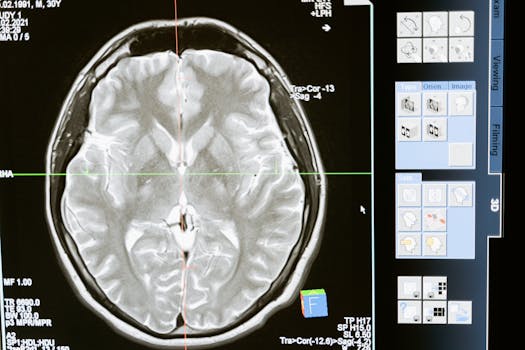Unlock the mysterious world of your mind with Spaced Time Repetition, a powerful learning technique scientifically designed to maximize your brain's potential. With the exponential expansion of information in today's digital world, it's more important than ever to find effective ways to learn and remember. For lifelong learners like you, particularly those diving into the intricate language of Mandarin, the Spaced Time Repetition method could be your secret weapon to conquer the challenges of learning and retention.
Spaced Time Repetition is a learning technique that strategically spaces out your study sessions to enhance long-term memory retention. It's like a personal trainer for your brain, helping you exercise your mental muscles for optimal performance. The method is based on the concept of the "forgetting curve," which describes how our ability to remember new information decreases exponentially after we first learn it. But don't worry - this is where Spaced Time Repetition steps in, scheduling reviews right when you're about to forget, thus strengthening your ability to recall information over time.
One of the key advantages of Spaced Time Repetition is its adaptability. Whether you're memorizing Mandarin characters or diving into the neurosciences, this technique can be tailored to your personal learning needs, making it a versatile tool in your learning toolbox. Moreover, this method takes the burden of planning and scheduling study sessions off your shoulders, allowing you to focus on the content you're trying to master.
In the following sections, we'll delve deeper into the science behind Spaced Time Repetition, explore practical applications, and discuss how technology, including the Traverse learning platform, can enhance this learning technique. We'll also share some tips for maximizing its benefits, especially for those learning Mandarin Chinese. So, get ready to revolutionize your learning strategy with Spaced Time Repetition.
Understanding the Concept of Active Recall in Spaced Time Repetition
Imagine your brain as a vast network of interconnected pathways. Now picture a memory, say a Mandarin character you're trying to learn, as a ball of light traveling along these pathways. Every time this ball of light travels the same route, it burns the pathway a little deeper, making the passage easier and faster. This is the essence of active recall — the process of strengthening memory by repeated retrieval of information, the foundation of Spaced Time Repetition.
The Role of Active Recall in Learning
Active recall lies at the heart of Spaced Time Repetition, acting as the secret ingredient that supercharges your learning process. Unlike passive review, where you simply read or listen to information, active recall demands your brain to work harder. It's akin to the difference between watching a workout video and actually performing the exercises. This "mental workout" not only strengthens the neural pathways associated with the information but also makes the retrieval of that information more effortless over time.
The research by Jeffrey Karpicke and Henry Roediger III in 2008 demonstrated the power of active recall. Students who used active recall through self-testing remembered significantly more vocabulary words compared to those who merely reread the vocabulary list. This potent technique, when combined with Spaced Time Repetition, can dramatically enhance your memory and retention.
Active Recall and Spaced Time Repetition: A Winning Combination
Active recall and Spaced Time Repetition are like two sides of the same coin. While active recall strengthens your memory, Spaced Time Repetition ensures that this memory doesn't fade away. The "spaced" part of Spaced Time Repetition refers to the intervals between your study sessions. By intentionally spacing your study sessions, you are not only giving your brain the time to consolidate the information but also fighting against the brain's natural tendency to forget, known as the forgetting curve.
Together, active recall and Spaced Time Repetition form a dynamic duo that maximizes learning efficiency. This combination is particularly beneficial for those learning Mandarin Chinese. For instance, when learning Mandarin characters, active recall helps strengthen your memory of each character, while Spaced Time Repetition ensures that these characters are etched deeply into your long-term memory.
In the next section, we will delve into the science behind Spaced Time Repetition and unlock the secret to overcoming the forgetting curve. So stay tuned and get ready to take your learning to the next level with Spaced Time Repetition.

The Science Behind Spaced Time Repetition: The Forgetting Curve and the Spacing Effect
As promised, it's time to pull back the curtain and reveal the science that powers Spaced Time Repetition. This technique, a crown jewel in the realm of effective learning, is underpinned by two key cognitive science principles: the Forgetting Curve and the Spacing Effect.
The Forgetting Curve and Spaced Time Repetition
Imagine you've just learned a new Chinese character. Initially, you remember it clearly. But as time passes, your memory of it begins to fade, much like a photograph left in the sun. This phenomenon is represented by the Forgetting Curve, a concept developed by the 19th-century psychologist Hermann Ebbinghaus.
The Forgetting Curve shows that without review, our memory of new information decays quickly at first and then levels off over time. It paints a somewhat gloomy picture of our ability to retain information. But here's where Spaced Time Repetition shines. By revisiting the material just before you're about to forget it, you can 'reset' the Forgetting Curve and slow down memory decay. Each review strengthens the memory, which in turn extends the time it takes for the information to fade.
The Spacing Effect: A Key to Long-Term Memory
The Spacing Effect is another pivotal principle in Spaced Time Repetition. It suggests that our brains learn more efficiently when we spread out our study sessions over time, rather than cramming everything into one marathon session. Think of it as allowing the mental 'mortar' to dry, solidifying new knowledge and making the learning process more effective.
The Spacing Effect goes hand in hand with the concept of desirable difficulty, as introduced by Robert Bjork. This principle proposes that learning is most effective when it's challenging, but not too hard. Spaced Time Repetition, with gradually increasing review intervals, provides just the right balance of challenge to keep our brains engaged and our learning optimized.
Storage Strength vs Retrieval Strength
The dual strength theory, as explained in Benedict Carey's book, "How We Learn," adds another layer to our understanding of memory. According to the theory, memories have two strengths: storage strength and retrieval strength.
Storage strength refers to how well information is embedded in our memory. It doesn't fade over time and can only be increased through repeated recall or use. Retrieval strength, on the other hand, pertains to how easily we can access that memory. Unlike storage strength, it does fade over time unless maintained through regular recall.
Understanding these principles allows us to appreciate the true power of Spaced Time Repetition. By leveraging the Forgetting Curve, the Spacing Effect, and the dual strength theory, we can harness the full potential of our brains and transform the way we learn and remember. Whether you're mastering Mandarin Chinese or any other subject, Spaced Time Repetition is your secret weapon to boost recall and retention. With the science of Spaced Time Repetition at your fingertips, every study session becomes a step toward effective, long-term learning.

Practical Application of Spaced Time Repetition: Flashcards and Study Intervals
So, you've learned about the science and the cognitive mechanics behind the Spaced Time Repetition method. Now, let's roll up our sleeves and dive into the practicality of this learning technique. As the saying goes, knowing is half the battle, but the other half is applying that knowledge. Here, we will explore the practical application of Spaced Time Repetition, focusing on the use of flashcards and the importance of setting the right study intervals.
The Power of Flashcards in Active Recall
Imagine being able to hold the key to your memory in your hands. That's precisely what flashcards represent in the world of Spaced Time Repetition. These handy learning tools have been around for ages, and for good reason. They are simple yet extremely effective in facilitating active recall, which is a cornerstone of Spaced Time Repetition.
The active recall facilitated by flashcards is not just about rote memorization. Studies have shown that students who study through retrieval practice using flashcards could enhance their learning, answer more questions correctly, and build more complex connections and concept maps. This method creates meaningful, deeper learning, and is far more effective than passively reading or re-reading information.
The Leitner System: Optimizing Flashcard Reviews
The Leitner System, developed by Sebastian Leitner, is a time-tested method that optimizes the use of flashcards in Spaced Time Repetition. This system involves creating a set of flashcards and sorting them into boxes based on how well you know the information. If you correctly answer a flashcard, it moves to the next box with a longer review interval. If you get it wrong, it goes back to the first box for more frequent review. This strategic approach ensures that you're reviewing challenging information more often and strengthening the knowledge you've already grasped at spaced intervals.
Setting the Right Study Intervals: Fighting Against the Forgetting Curve
One of the key elements of Spaced Time Repetition is the timing of your study sessions. The “spaced” part of Spaced Time Repetition refers to the gaps of time in between study sessions. This could mean reviewing information right after school, and then actively recalling the information in a few hours, a few days, then a few weeks later.
The timing of these intervals is crucial. The research suggests that the most effective schedule for spaced repetition is to review the material 24 hours after the initial learning session, then a week later, followed by two weeks, a month, two months, five months, and finally a year later.
It's important to note, however, that these intervals are not one-size-fits-all. They might need to be adjusted based on factors such as your familiarity with the material, the complexity of the information, and your personal learning pace.
In conclusion, Spaced Time Repetition, when applied correctly using methods such as flashcards and appropriate study intervals, can revolutionize your learning process. The next section will delve into the role of technology in reinforcing and enhancing this approach.

The Role of Technology in Spaced Time Repetition: Anki, SuperMemo, and Traverse
In the digital era, leveraging technology for learning is no longer optional—it's a must. And when it comes to Spaced Time Repetition, technology plays a pivotal role in streamlining and enhancing the learning process, making it more effective and efficient. Let's dive into three key players in the Spaced Time Repetition game: Anki, SuperMemo, and Traverse.
The SuperMemo Legacy
Let's start with the big one—SuperMemo. Known for its continuous development and optimization since 1982, SuperMemo is a household name in the world of Spaced Time Repetition. Its inventor, Dr. Piotr Wozniak, has dedicated a significant portion of his life to perfecting the SuperMemo spaced repetition algorithms. These algorithms stand out for their accurate difficulty estimations for flashcards and their ability to adapt to individual learner's memory patterns. However, while SuperMemo's algorithm sophistication is appealing, some learners find it hard to access due to licensing requirements and its aging user interface.
Anki: The People's Choice
Based on the original SM-2 algorithm from SuperMemo, Anki has gained massive popularity among students worldwide. It's free to use (except for the iOS app), user-friendly, and has a thriving community where users can share and access decks on various topics. Anki also offers custom flashcards with custom scheduling, making it an attractive option for learners who want flexibility in managing their study schedules.
Traverse: The Future of Learning
And then we have Traverse, a platform that goes beyond traditional flashcard-based learning, integrating active recall and spaced repetition into a connective note-taking system. Traverse allows learners to create flashcards directly from their notes, fostering a more contextual and interconnected learning experience. And the best part? Your flashcards are not isolated—they are linked to the corresponding page and how it connects to other pages, turning your learning into a comprehensive knowledge tree.
Whether you're a medical student cramming anatomy facts or a lifelong learner trying to master Mandarin, these platforms provide the tools and algorithms to apply Spaced Time Repetition effectively. They offer the convenience of digital flashcards, the precision of scientifically-backed algorithms, and the flexibility to adapt to your learning pace and style. But remember, while technology can enhance your learning, it's how you use these tools that will ultimately determine your success.
Next, we'll explore how Traverse specifically enhances spaced time repetition through mind mapping, flashcards, and connected note-taking. Stay tuned to unlock more secrets of effective learning!
How Traverse Enhances Spaced Time Repetition: Mind Mapping, Flashcards, and Connected Note-Taking
Unlock the door to an enhanced learning experience. Traverse is not just a learning tool but a dedicated partner in your journey towards mastering new knowledge. With its unique blend of mind mapping, flashcards, and connected note-taking, it takes the powerful technique of spaced time repetition to new heights.
Mind Mapping for a Comprehensive View
First off, Traverse introduces mind mapping into your learning process. This feature allows you to visualize complex topics, giving you a bird's eye view of how different concepts are interconnected. By providing a visual structure for the information you're learning, mind mapping makes it easier for you to understand and remember intricate subject matters. It's like having a map of the knowledge landscape, guiding you as you navigate new territories of understanding.
Spaced Repetition Flashcards for Optimal Memory Retention
Traverse also incorporates the use of spaced repetition flashcards. This feature is designed to ensure optimal memory retention by revisiting content at the ideal time. Remember, effective learning is not about cramming all the information at once, but about spacing out your review sessions. With Traverse, you don't have to worry about scheduling your reviews. The platform does it for you, allowing you to focus on the learning process itself.
Connected Note-Taking for a Deeper Understanding
Lastly, Traverse features connected note-taking, a method that allows you to create links between notes across various topics. This feature fosters a deeper understanding of the subject matter, as it encourages you to see the connections and relationships between different pieces of information. By creating these links, you're not just learning isolated facts, but building a network of knowledge that you can easily navigate and draw from.
Bringing it All Together: The Power of Integration
What makes Traverse a game-changer in the world of learning tools is its seamless integration of these three powerful strategies. By combining mind mapping, spaced repetition flashcards, and connected note-taking into a single, user-friendly platform, Traverse creates a learning environment that is both efficient and effective. It's not just about memorization, but about understanding and retaining knowledge in the most meaningful way.
So, are you ready to unlock the full potential of spaced time repetition with Traverse? The journey to effective learning is just a few clicks away!
The Power of Spaced Time Repetition in Learning Mandarin Chinese with Traverse and Mandarin Blueprint
Have you ever found yourself forgetting a new Mandarin Chinese character just days after learning it? You're not alone. This challenge is something many language learners face. But here's the good news: with the power of spaced time repetition, you can conquer this issue head-on, and tools like Traverse and Mandarin Blueprint are here to supercharge your Mandarin learning journey.
Spaced Time Repetition: A Key to Mastering Mandarin Chinese Characters
Mandarin Chinese, a character-based language with thousands of characters to learn, can initially seem an overwhelmingly daunting task. However, applying the technique of spaced repetition significantly changes the game. This evidence-based learning strategy involves reviewing lessons at increasing intervals to ensure that the information is unforgettable and well-remembered.
By reviewing the characters at strategic intervals, you reinforce your memory of them. The characters you find challenging will be reviewed more frequently, allowing you to focus your attention on them, while the characters you recall easily will be reviewed less often. This smart approach transforms the initially intimidating task of learning thousands of characters into a manageable one, anchoring these characters in your long-term memory.
Harnessing the Power of Traverse and Mandarin Blueprint
Traverse is a learning platform that's equipped with advanced algorithms that adapt to your performance, scheduling reviews at the optimal time to aid retention. It's a cognitive science-driven tool that optimizes your Mandarin learning process by integrating mind mapping, visual mnemonics, and spaced repetition flashcards - three techniques known to significantly enhance memory and learning efficiency.
Leveraging the powerful spaced repetition feature of Traverse, you'll be reviewing the characters you find challenging more often, while the ones you find easy will be presented less frequently. This personalized approach makes your study sessions more effective and efficient, maximizing your effort.
Alongside Traverse, Mandarin Blueprint offers a comprehensive curriculum to aid your Mandarin learning journey. This curriculum, combined with the advanced features of Traverse, results in a more engaging, efficient, and rewarding Mandarin learning experience.
Turn Learning into a Rewarding Experience
With spaced time repetition, Mandarin Chinese characters don't have to be daunting anymore. Traverse and Mandarin Blueprint offer a dynamic duo for mastering this language. By combining the power of these resources, you're not just learning Mandarin Chinese characters, you're setting yourself up for a successful and rewarding language learning journey. Embrace the power of spaced time repetition and unlock your potential in mastering Mandarin Chinese!

Tips for Maximizing the Benefits of Spaced Time Repetition
Just like a professional athlete is always seeking to improve their performance, a lifelong learner is always looking for ways to optimize their study sessions. With spaced time repetition, you've got a powerful technique at your fingertips. But to truly tap into its potential, you need to know how to use it effectively. Here are some tips that will help you maximize the benefits of this scientifically-proven memory technique.
Balance Your Success and Error Rates
One of the keys to successful spaced time repetition is finding the sweet spot between your success in recalling information and your error rates. Aim for a balance that challenges your brain without overwhelming it. When the system is too easy, your brain doesn't have to work hard to retrieve information, and the learning isn't as effective. Conversely, if the system is too hard, you may become frustrated and lose motivation. By maintaining a balance, you ensure that you're actively using your brain to retrieve information, which strengthens your neural pathways over time.
Persist Through Challenges
In the world of learning, challenges are your friends. When you struggle to remember a piece of information, your brain works harder, strengthening the memory in the process. So, rather than giving up when you encounter difficulties in remembering information, take it as a sign that your brain is working hard to cement that information in your long-term memory.
Create a Conducive Study Environment
A well-organized, distraction-free, and comfortable study space is crucial for effective spaced time repetition. Your environment plays a significant role in your ability to focus and absorb information. Ensure your study space is quiet, well-lit, and free from distractions.
Experiment with and Without Flashcards
Flashcards are a popular tool for spaced repetition, especially for language learning. However, they may not be as effective for complex subjects that require a more in-depth understanding of the material. Don't hesitate to experiment with other methods of study, such as mind mapping or connected note-taking, both of which can be done seamlessly on the Traverse platform.
Use Technology to Your Advantage
Finally, leverage technology to optimize your spaced time repetition learning. Platforms like Traverse not only automate the spacing intervals based on your personal learning needs, but they also offer integrated tools like mind mapping and connected note-taking to further enhance your study sessions.
Remember, spaced time repetition is not a quick fix. It requires time, effort, and consistency. But when used properly, it can significantly enhance your learning experience, boost your long-term memory recall, and set you on the path to mastering your chosen field of study, be it Mandarin Chinese or any other subject. So, get started with these tips and unlock the power of effective learning with spaced time repetition!

Conclusion: The Future of Learning with Spaced Time Repetition
In the realm of effective learning, spaced time repetition stands out as a shining beacon of efficiency and recall. As we've seen, it's not just a study method, but a science-backed approach that works harmoniously with our brain's natural forgetting curve to enhance learning. If you're eager to learn Mandarin Chinese, or any other complex subject, the future of learning powered by spaced time repetition is not only promising but also within your grasp.
The technique of spaced time repetition is akin to training the brain as you would any other muscle – with gradual, consistent exercise over time. Just as lifting heavier weights at increasing intervals strengthens your biceps, reviewing the same lessons at increasing intervals strengthens your memory. It's not about cramming information, but rather about learning strategically and efficiently.
Moreover, the role of technology in leveraging spaced time repetition cannot be overstated. Tools like Anki, SuperMemo, and Traverse have revolutionized the way we learn, automating the process and tailoring it to individual learning needs. They have turned spaced time repetition from a simple tool into a personalized learning companion.
In particular, Traverse, with its integrated features of mind mapping, flashcards, and connected note-taking, provides an enriched learning environment that nurtures both understanding and memory. The partnership with Mandarin Blueprint offers a unique opportunity for learners aiming to master Mandarin Chinese.
The future of spaced time repetition also lies in its ability to tap into the concept of 'desirable difficulty'. This cognitive principle suggests that when the retrieval strength of a memory drops, learning increases when we access the memory again. It's a counterintuitive theory that has become a cornerstone of spaced time repetition, allowing learners to make the most of our brain's natural 'forgetting' process to enhance learning.
Looking forward, as we continue to refine and understand the method, its applications and benefits will only grow. The challenge lies in finding innovative ways to integrate spaced time repetition with other cognitive research findings and strategies. The goal is to make learning not just effective, but also enjoyable and rewarding.
In conclusion, as your journey of lifelong learning continues, remember the power of spaced time repetition. It's a proven, effective, and efficient method for long-term learning. Its adaptability to different types of education and its compatibility with modern technology make it a valuable asset for any learner.
So why wait? Start leveraging the power of spaced time repetition today and embark on a more effective and rewarding learning journey.

